Word count: 0 Step count: 8309 + 13,055 + 11,575
Sunday 5/13
Awoke in Dresden, had another fabulous Hildegard von Bingen breakfast, and had the hotel van take us to the train station. In the bathroom at the station, a guy in full plate armor came clanking out of the next stall, no shit swear to God. We bought baguettes at Crobag (Croissant + Baguette — ugly name, pretty good sandwiches) to eat on the train.
Then… Berlin!
The Berlin Hauptbahnhof (main train station) is huge, modern, multi-level, shiny, crowded — this is The Big City! We’re hearing a lot more languages and accents and seeing a lot more colors of people on the street than we did in any previous city, even Vienna. It took us a while to even get out of the station, what with fighting crowds everywhere, standing in line at the TI to buy transit passes, and stopping at a grocery store in the station for tomorrow’s breakfast (concerned that neighborhood stores might not be open on Sunday, though this didn’t prove to be a huge problem). We took a taxi to our hotel, actually an apartment (Apartmenthaus Karlito), picked up the key in the cafe downstairs, and moved in. It’s a nice little place, clean and bright, with a tub, kitchen, plenty of elbow room, but alas no laundry facilities.
Our first stop after getting settled was the Flomarkt am Mauerpark (Flea Market at the Berlin Wall Park), a Saturday-Sunday thing not too far from our apartment. It was a HUMUNGOUS flea market, like a 300-family rummage sale with food stands (we had a savory “pastry snail” from a busy Turkish vendor) and eight bouncy castles. It just went on and on and on. And they do this every weekend?
Overwhelmed, we walked toward the nearby U-Bahn (subway) station, which had been a “ghost” station before the Wall fell. This was one of the stations on the East side of the wall that West Berlin subway trains ran through without stopping. They were boarded up, guarded, and went completely unchanged from 1961 to 1989. But just before we got there we encountered the Ost-West Cafe (so called because it’s near the former Wall, also because it features Turkish and German cuisine) and decided to stop for coffee. It was really crowded, a good sign, and the food options looked good, so we ordered dinner: juicy chicken skewers with grilled potatoes and vegetables for me, tortellini in yogurt sauce and red lentil soup for Kate.
After dinner, we walked past the Berlin Wall Memorial (but did not have time to give it the attention it deserved) and into the station, which is now active but looks rather old-fashioned. Then back to the apartment for a quiet evening of plotting out our Berlin touristing and doing some wash in the sink. Oh the glamour.
Monday 5/14
Awake 8:00 (but both of us were awake for a while in the night – no more coffee after 2:00 PM for me!). We had yogurt with muesli and honey in the room for breakfast, then a very nice cafe au lait at the cafe downstairs (which is also the hotel front desk, to the extent we have one).
We’d had ambitious plans to start at the zoo, work eastward following Rick Steves’ touristing plan, and hit the Reischstag early before the crowds got too terrible. But as it was past 9:30 by the time we finished our coffee, this was clearly not going to work. Instead we took the U-Bahn to the Wall memorial we hadn’t had the energy for yesterday, then to the Underground Berlin tour office, planning to get tickets for the 1:00 tour. However, tickets for the 11:00 AM tour were available, so we jumped on that. Having an hour to kill before our tour, we spent the time at a nearby mall, getting cash from an ATM and browing in a bookstore and Real (a variety store rather like Target, where Kate bought a washcloth — for some reason, most hotels here do not provide washcloths).
Our Underground tour was most unlike the Underground tours we’ve taken in Seattle and Pendleton. This one was a tour of a WWII air raid shelter, one of the few still in existence, now fitted out as a museum. Our excellent tour guide gave a great overview of how the shelter was built and used as well as general information about life in Berlin during the war. He didn’t stint on difficult details, such as the fact that the shelters were built by slave labor and that every remaining male in the city was pressed into service (on pain of death if they refused) for the final defense of Berlin, thousands of old men and boys sacrificed in a battle that everyone knew was pointless. A very informative and interesting tour, if somewhat depressing.
We took the S-Bahn (light rail) one stop, then U-Bahn one stop to a restaurant called Zum Schusterjungen for a “DDR-style” lunch. It felt strange to take two trains just one stop each, but that would have been a 30-minute walk; this is a BIG city. Maybe it’s because we didn’t sleep well last night, but I feel like we’re kind of running on fumes here, and Berlin is not the town to take it easy. We ordered schnitzel with spargel (asparagus — it’s spargel season, it’s on every menu, we can’t evade it) for Kate, “farmer’s breakfast” (omelet with fried potatoes, onions, a bit of bacon) for me, quite nice. “Not much bacon in that omelet,” said Kate. “Well, you can’t go to a restaurant that offers East German cuisine and complain about the lack of meat…”
After lunch we headed to the famous Brandenberg Gate, taking a tram to Alexanderplatz, then bus to Brandenberg Tor. But at Alexanderplatz I noticed that we were right near the base of the big Fernsehturm (East Germany’s answer to the Space Needle) and went looking for the penny-smashing machine that was supposed to be there. We found two machines at the base of the tower, another at a souvenir shop nearby. It wasn’t easy to find our bus stop at sprawling Alexanderplatz, but eventually we found it and made our way to Brandenberg Tor. We knew it was an important historic site because we saw Mickey Mouse in a Jedi robe and many other costumed characters, mimes, street vendors, and other such individual enterpreneurs there to bilk the tourists.
The Reichstag was nearby, so we walked over to check out the line. Hey, the line isn’t too bad, let’s go in! Well, it turned out that the line was short because they have changed the system: you now have to make a reservation online beforehand (and it’s booked up for three days in advance, six weeks for a guided tour). I tried a couple of times from my phone, but the website kept erroring out.
We walked down Unter Den Linden, which was Berlin’s Broadway before the War, was entirely on the East side of the Wall under Communism, and is now busy and mostly under construction. Kate visited here in 1981, before the Wall fell, and says that at that time there was essentially no one here. We found another penny machine at a souvenir shop on Under Den Linden, but the one at Madame Tussaud’s was gone. The bookstore Berlin Story now has a 5 euro charge for its small museum and film, but we paid it for a chance to sit down. Not a bad little museum actually, but I didn’t really have the brain to appreciate it.
Kate and I may be the only people outside of Germany who have a fondness for the Trabant, East Germany’s cheap little two-stroke car. This is because we saw the movie Go Trabi Go! right before a trip to France during which we nicknamed our rented Peugot “Trabi.” So, even though we’d never before seen a Trabant in the flesh, we were thrilled that there was one in the museum that you could actually sit in. Man, what a piece of junk!
When I was a teenager I believed that the Communists were not as evil as they were portrayed, that it was simply a different economic system and that they were demonized by the US for propaganda purposes. After what I’ve seen in museums here and in Prague, I now believe that they really were that bad. Clearly there was a reason that so many people risked their lives (and often lost them) trying to escape.
While Kate was shopping in the Berlin Story bookstore I tried again to reserve a visit to the Reichstag, trying the German site since the English site seemed to be having consistent errors. I did get through to submit a request, and after several CAPTCHAs and web forms and an exchange of emails I managed to get a reservation for 9:00 PM Wednesday. It’s supposed to be quite something.
I also used the Time Out Berlin app on my phone (it’s free!) to locate a good restaurant nearby. “Cafe No!” is the one restaurant in a couple of blocks of monolithic government buildings, a character-filled little bistro that emphasizes wine but also has a few food offerings. Kate had Maultaschen (German ravioli, sort of) and I had Flammkuchen (German pizza, sort of) which seemed to be the house specialty, and oh heavens was it good. It would be hard not to be good with sour cream, bacon, and onions, but even so it was particularly fine, with a delicate thin crust and a smokey flavor. I balanced that out with a “vitamin schpritz”: freshly pressed carrot, apple, and orange juice with fizzy water, a twist of lemon, and honey, very nice.
After dinner, we were glad to find that the U2 subway ran straight from a stop very near the restaurant to a stop very near the hotel, so no long walks and no transfers, huzzah. We stopped at a corner market for some yogurt for breakfast, fell over for an hour or so, got up to write up some notes, then fell over again.
Tuesday 5/15
Awake 8:00-ish, yogurt for breakfast, out the door 9:00-ish. After the last few days of man’s inhumanity to man (Nazis or Communists, take your pick, Berlin has plenty of both) we wanted to look at some pretty pictures, so we headed to the neighborhood of Schloss Charlottenburg, about an hour away by transit, for a group of three museums nearby. Even with two iPhone apps to help, there were way too many transit options and we finally settled on a route that was perhaps less efficient than it might have been but involved fewer transfers than the others. Even so we had some difficulty finding the stop for our bus (I think we wound up taking a different bus than we’d planned because we happened to find ourselves at its stop).
One thing about Berlin: it’s an interesting mix of pre-War, post-War, and post-Reunification architecture. As we look around we have been really noticing the few 1800s and 1900s buildings, buildings of a type that are the vast majority in Vienna and Prague. Dresden was completely flattened in 1945 and has rebuilt only a few key buildings in the old style, so that it gives a generally newish appearance that feels very normal to an American. But Berlin has saved or reconstructed enough old buildings that you can’t help but realize that it’s an old city that has lost more than 90% of its architectural heritage. And there are construction cranes everywhere.
Our first museum today was the Scharf-Gerstenberg, focusing on the surrealists. It had fine examples of Klee, Ernst, Magritte, and Dali, also Hans Bellmer whom I’d never heard of before but whom I liked, and a sometimes-over-informative audio guide. In another area, the former stables of Schloss Charlottenburg, were proto-surrealist works by Goya and Piranesi and a huge Egyptian gateway. As the audio guide said, “what could be more surreal than a giant Ancient Egyptian monument in the middle of an art gallery?” but in fact the reason it’s here is that this building was the temporary home of the Egyptian Museum while it was being renovated, and though the renovations are complete there’s still no room in the new space for this huge piece. It will be moved to its final home when the Egyptian Museum’s fourth wing is finished, in 2025.
For lunch we had a simple sandwich and soup at a nearby bakery/cafe called Back Zeit or some such. Then we headed to the second museum, the Berggruen, which features Picasso, Cezanne, and Klee but was, alas, closed for renovations. So we headed to the third museum, the Brohan, with its fine collection of Art Nouveau (AKA Jugendstil) and Art Deco furniture, lamps, tea sets, and suchlike. I love this style so much, with both Nouveau and Deco combining natural and mechanical forms, and it’s a shame that it was only really in fashion for a decade or so.
By that point we had completely hit the wall, so we dragged ourselves back to the apartment and fell unconscious for about two hours. We have been touristing very, very hard for the past three and a half weeks, not to mention the emotional burden of all those Nazis and Communists, and we’re definitely getting kind of crispy around the edges. We rested in the apartment for the remainder of the afternoon, until it got kind of dinner-time-ish.
We walked a ways to the Hackesche Hofe, a collection of connected courtyards housing many delightful little shops, and browsed there for a while before deciding to head out in search of dinner. We investigated several restaurants, but we decided that what we really wanted was to eat what native Berliners eat, which is currywurst and doner kebap. Currywurst, at least the way we had it, is a curried sausage, cut up and drowned in a curry sauce, served with French fries (which are in turn drowned with ketchup and mayonnaise), and eaten with a little wooden fork, and it was disturbingly tasty. Doner kebap is kind of like gyros, but Turkish rather than Greek, served in a quarter-flatbread with a variety of sauces and condiments, and also very good in a not-good-for-you way. These are the local equivalent of the ubiquitous American burger-and-fries and we couldn’t possibly leave Berlin without having tried them. “I can really see the appeal,” says Kate.
It was beginning to rain then, so after a brief stop at a bakery for some bread for tomorrow’s breakfast we headed back to the apartment for a quiet evening.
Maybe we’ll take it a little easier tomorrow. (Ha.)
Now for the photos, though I haven’t been taking a lot of photos in Berlin (100 photos from Dresden and Berlin combined so far, vs. 500 in Prague and over 1000 in the Czech towns). With the streets so crowded there haven’t been a lot of good opportunities to haul out the camera and take a moment for the right shot. Also the light has generally been terrible. Also we’ve been spending a lot of time in museums and other spaces that don’t allow photography. Also most of Berlin, interesting though it is, is not terribly photogenic. Berlin is one of the most heavily graffiti’d places I’ve ever been. I don’t know if the graffiti on the Wall is a cause of this or a symptom of it, but there’s hardly a wall, bank machine, or lamp post that isn’t completely covered with scrawls (generally ugly and inartistic, to my eye) in marker and spray paint. Even the bathrooms of quite nice restaurants are a riot of graffiti. Still, I did find a few nice shots, so here they are.














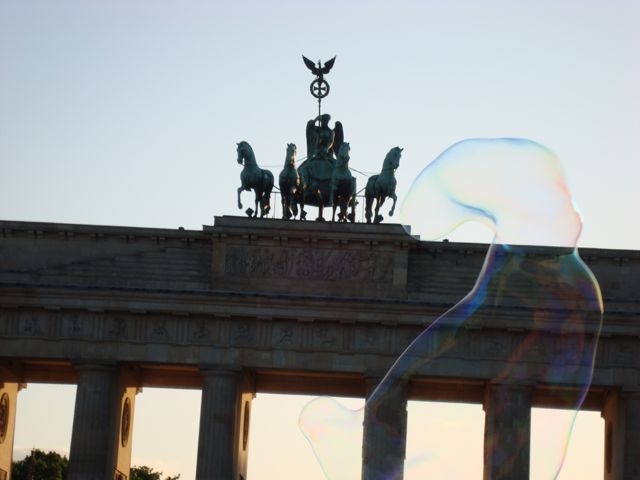

































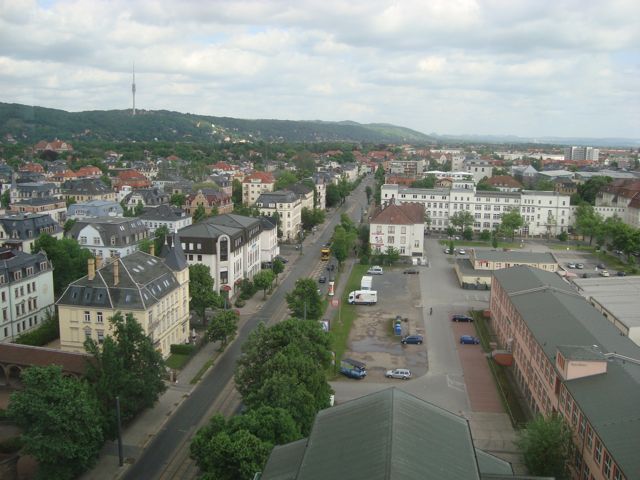
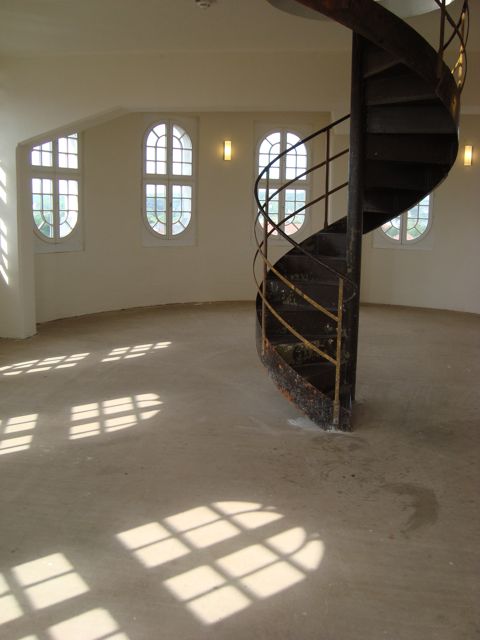
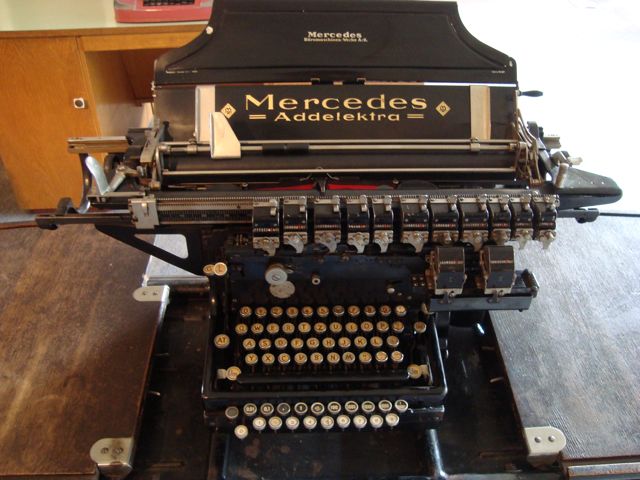

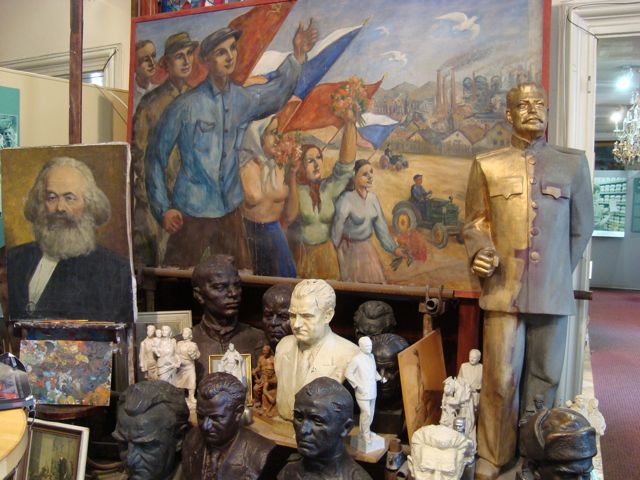







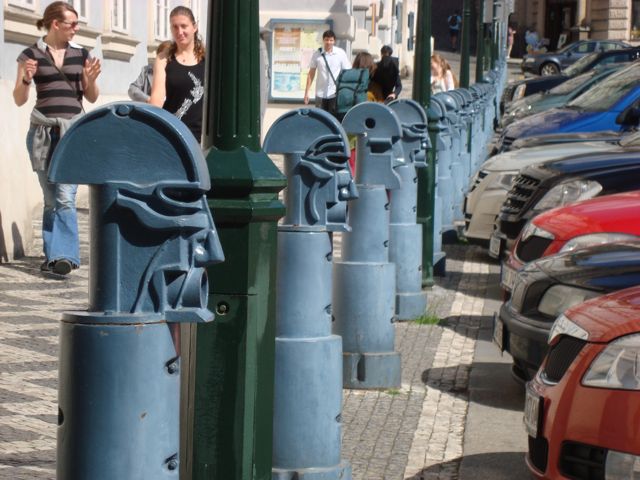





















Recent Comments